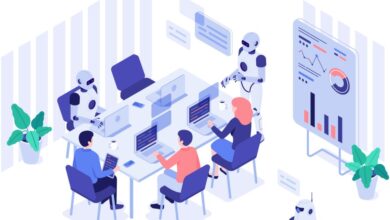Tech Alchemist: Pramath Parashar is leading enterprise automation
Enterprise Automation has become a crucial step in today’s IT domain. By removing manual stages and infusing advanced technologies to upgrade performance level, it has not only reduced manual labor but also increased efficiency. In this article, one such automation big name is talked about.
By automating the generation of environmental trend reports, Pramath Parashar reduced annual labor costs by over $50,000 and cut down 85% of manual effort involved in compiling regulatory documents, thus ensuring more than 98% accuracy in tabulated outputs. Separately, he developed an Excel to SharePoint Sync Automation tool that automatically uploads PDF documents to SharePoint and maps their metadata directly from Excel files. This low-code solution improves traceability, reduces human error, and handles thousands of records efficiently by breaking the workflow into modular, fail-safe components.
Next is, Annual Report Automation Engine. In this particular action, there is a python script that takes raw financial numbers from Excel sheet and creates clean, tabulated formats, that not only provides concise graphical presentation, but also follows business rules. This presentation is often used in companies’ annual report, be it for budget, finances, profits, marginal costs, etc.
This solution utilizes Python scripts to transform raw environmental monitoring data retrieved from internal databases into structured, tabulated formats. The engine applies business rules such as yearly averaging, parameter-specific calculations, and site-based grouping, and generates standardized trend line charts. It then compiles fully formatted Word documents aligned with regulatory and internal reporting standards. These outputs are used in annual environmental reports, covering critical metrics like pH, Radium, Sulfate, Uranium, and Total Suspended Solids, thus ensuring accuracy, compliance, and efficiency in delivering transparent, data-driven insights

Parashar developed a desktop tool called the CTD Processor PyQt App, designed to process scientific data related to Conductivity, Temperature, and Depth (CTD) in water monitoring studies. This application automates the calibration, cleaning, and formatting of raw CTD data, making it especially useful in environmental fieldwork and aquatic monitoring programs. “No coding needed, it’s just a click away,” says Pramath, highlighting the app’s user-friendly interface and ability to generate ready-to-use outputs with a single action.
“Using Python, Power Automate, and PyQt, I built systems that handle documents, clean data, and support company reporting. My approach blends easy-to-use tools with powerful coding, making automation both scalable and accessible across the organization”, informs Pramath, in an interview.
All these feats come with late night calls, multiple knowledge transfers and cross-team collaborations. He has had his fair share of challenges.
Tools like Power Automate, used in Sharepoint, have size and speed limits. This creates a hassle when scanning a rather heavy Excel file. At times, different files, with same names are uploaded. “We cannot totally eliminate the human touch, can we? Eventually, there are steps where our workers have to do the firefighting”, he comments.
“I tackled real problems by understanding the tools, the users, and the business needs, that is, by creating strong, lasting solutions that help the company work faster and smarter”, he says.
In the world of research, Pramath has published multiple papers. Comparative Analysis of Distributed Storage Systems”, “Enhanced Visual Statistical Inference”, “Enhancing Association Rule Mining with the CGRG Algorithm”, “Design and Implementation of an Automatic Plant Watering Device with 2D Visual Gesture Recognition”, to name a few. There are many others, helping the newbies, grasp the concept of enterprise automation.
Navigating the future, he imparts, “Automation should ease user pain and meet business goals. That’s why I mix low-code tools with Python, balancing ease and power. Scalable, accurate, and user-friendly solutions are key to lasting impact in document workflows and enterprise efficiency.”
Pramath Parashar shows how thoughtful enterprise automation can transform everyday processes into intelligent, efficient systems. By blending accessibility with technical depth, his tools not only save time and money but also empower non-technical users. His work stands as a model for scalable, future-ready solutions that simplify complexity across industries.



